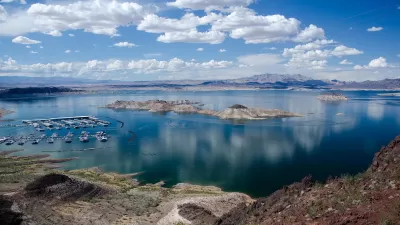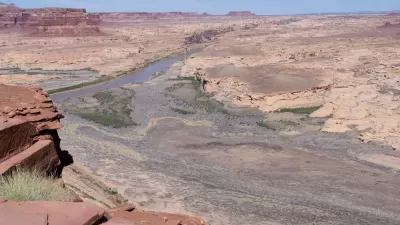The Environmental Protection Agency finds itself in a peculiar place. Normally it investigates spills caused by the private sector. Now it's cleaning up a massive spill it caused while investigating a leak at an abandoned mine in southwest Colorado.
The Environmental Protection Agency was investigating a leak at the abandoned Gold King Mine in La Plata County (see Denver Post map) on August 5 when it accidentally opened the mine tunnel, triggering a spill of about a million gallons of wastewater into a tributary of the Animas River, turning the river into "a murky, mustard shade of yellow."
On Sunday, both Durango, county seat of La Plata, and the county declared a "state of local emergency."
"E.P.A. officials confirmed the leak contained heavy metals, including lead and arsenic, but said it was too early to know whether there was a health risk to humans or animals.," writes Daniel Victor for The New York Times. An EPA-supervised crew was working to clean the spill though it was expected to enter New Mexico.
From the description provided by Bruce Finley of The Denver Post, it certainly sounded unhealthy:
The soupy yellow-orange Animas River contains arsenic, lead, cadmium, aluminum and copper — among other potentially toxic heavy metals — "at varying levels," the officials said in a packed public meeting.
For an entire list of metal concentrations and pH levels, click on the "documents" link on Gold King Mine Blowout Incident page.
"This is a huge tragedy. It’s hard being on the other side of this," said Dave Ostrander, the E.P.A.’s director of emergency preparedness for Region 8. "Typically we respond to emergencies, we don’t cause them.”
The Animas River flows into the San Juan River which meets the Colorado River at Lake Powell.
"And EPA officials at a command post in Durango could not rule out the possibility that contaminants will remain concentrated enough to appear yellow on Sunday when the plume is expected to approach Lake Powell and the Grand Canyon, carved by the Colorado River," writes Finley.
FULL STORY: Wastewater Spill in Colorado Turns a River Yellow

Alabama: Trump Terminates Settlements for Black Communities Harmed By Raw Sewage
Trump deemed the landmark civil rights agreement “illegal DEI and environmental justice policy.”

Study: Maui’s Plan to Convert Vacation Rentals to Long-Term Housing Could Cause Nearly $1 Billion Economic Loss
The plan would reduce visitor accommodation by 25% resulting in 1,900 jobs lost.

Why Should We Subsidize Public Transportation?
Many public transit agencies face financial stress due to rising costs, declining fare revenue, and declining subsidies. Transit advocates must provide a strong business case for increasing public transit funding.

Paris Bike Boom Leads to Steep Drop in Air Pollution
The French city’s air quality has improved dramatically in the past 20 years, coinciding with a growth in cycling.

Why Housing Costs More to Build in California Than in Texas
Hard costs like labor and materials combined with ‘soft’ costs such as permitting make building in the San Francisco Bay Area almost three times as costly as in Texas cities.

San Diego County Sees a Rise in Urban Coyotes
San Diego County experiences a rise in urban coyotes, as sightings become prevalent throughout its urban neighbourhoods and surrounding areas.
Urban Design for Planners 1: Software Tools
This six-course series explores essential urban design concepts using open source software and equips planners with the tools they need to participate fully in the urban design process.
Planning for Universal Design
Learn the tools for implementing Universal Design in planning regulations.
Smith Gee Studio
Alamo Area Metropolitan Planning Organization
City of Santa Clarita
Institute for Housing and Urban Development Studies (IHS)
City of Grandview
Harvard GSD Executive Education
Toledo-Lucas County Plan Commissions
Salt Lake City
NYU Wagner Graduate School of Public Service





























